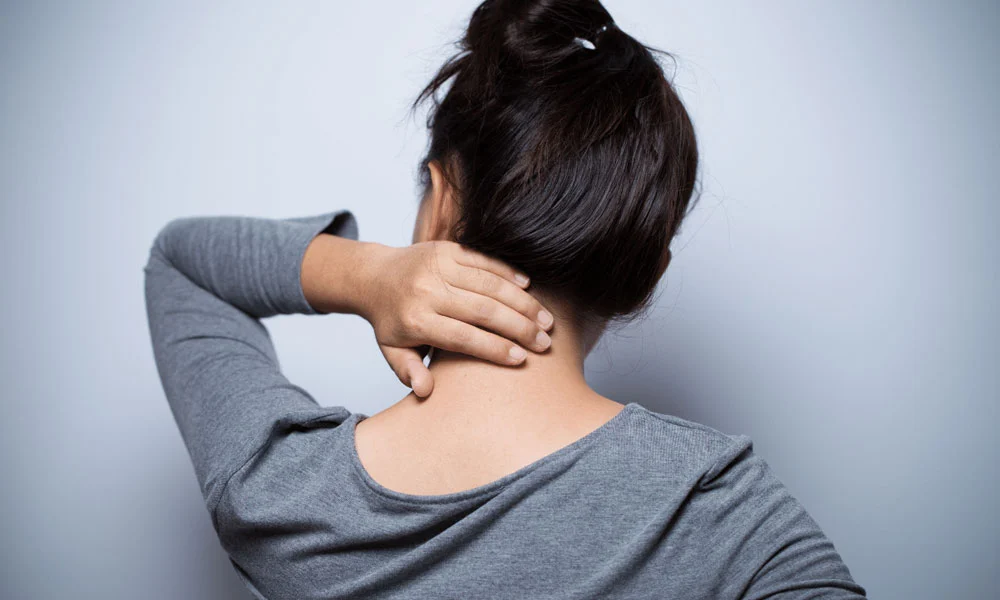Neck pain is a common functional and mechanical condition. Neck muscles can be easily strained due to poor posture — whether it’s leaning over your computer or hunching over your workbench. Osteoarthritis is a common cause that leads to neck pain.
Rarely, neck pain can be a symptom of a more serious condition. Seek medical care if your pain is experiencing along by numbness or loss of strength in your arms or hands or if you have shooting pain in your shoulder or radiating down your arm.
If the pain is worsening by holding your head for a prolonged period, such as driving or working at a computer
Muscle tightness and spasms
Decreased ability to move your head
Headache
Bad posture
Overuse of neck
Muscle weakness
Muscle strains:
Overuse, if you are hunched over your computer or smartphone for a prolonged period, often triggers muscle strains. Even minor things, like reading in bed or gritting your teeth, can strain neck muscles.
Worn joints:
Like the other joints in your body, your neck joints are prone to wear easily with age. Osteoarthritis is the degeneration of cushions (cartilage) between your bones (vertebrae) to deteriorate. Your body then forms bone spurs that affect joint mobility and cause pain.
Nerve Compression:
Disc herniation or bone spurs in the vertebrae of your neck can press on the nerves branching out from the spinal cord.
Injuries:
Whiplash injury, which occurs when the head is jerked backward and forward, straining the soft tissues of the neck.
Diseases:
Certain diseases, such as rheumatoid arthritis, meningitis, or cancer, can also cause neck pain.
Use good posture: When standing and sitting, your shoulders should be in a straight line over your hips and your ears are directly over your shoulder.
Take frequent breaks: Take a break, move around and stretch your neck and shoulders If you travel long distances or work long hours at your computer.
Adjust your workplace desk, chair, and computer so that the monitor is at eye level. While sitting hip level should be slightly above your knee level. Use your chair’s armrests while sitting.
Avoid keeping the phone between your ear and shoulder when you talk. Use a headset or speakerphone instead when your hands are not free.
Smokers are at a higher risk of developing neck pain.
Avoid carrying heavy bags over your shoulder the weight can strain your neck.
Sleep in a good position: While sleeping your head and neck should be aligned with your body. Keep a lightweight pillow under your neck. To flatten your spinal muscles try sleeping on your back with thighs elevated on pillows.
Contact a doctor if you have pain:

